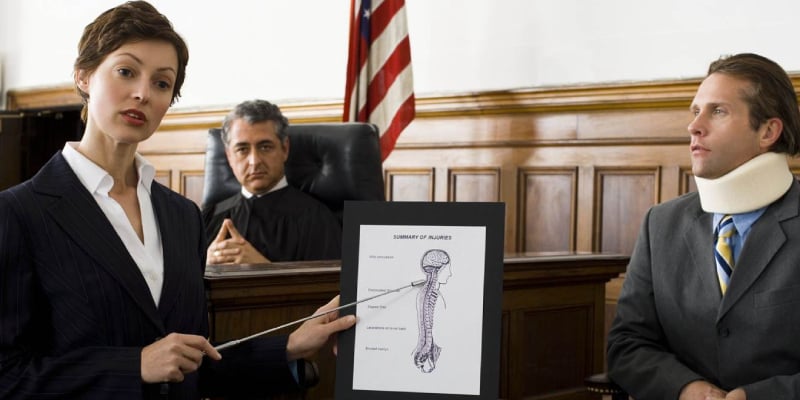1. Accident Details: Substantiating or Challenging the Crash
If you posted about the collision or shared your location around the time of the crash, those timestamped posts help reconstruct the scene. For example:
• A photo of your damaged car after the accident can validate the severity and scale of the incident.
• A timestamped status or check‑in can refute claims you weren’t near the accident location or that you exaggerated the events.
This kind of real-time digital footprint can back up your version of events with concrete proof.
2. Injury Timeline: Showing Cause and Effect
Medical records may indicate you saw a doctor two days after the accident, but a status update like “Finally feeling some neck pain today”—posted the same day—brings vivid clarity to your injury timeline. That kind of contemporaneous note helps establish:
• Onset of symptoms – especially with injuries like whiplash that may not hit immediately.
• Continuity – if you later share a health update over time, this effectively counters any suggestion the injury came from another event.
3. Lifestyle Changes: Demonstrating Impact
Compensation isn’t just about immediate medical bills—all the ways your life has changed matter. Here, social media can be a goldmine:
• Cancelled travel, sports, or social events shared online can show genuine loss of enjoyment.
• Diminished work-related Instagram posts or LinkedIn updates can hint at reduced productivity or forced career shifts.
• A family member posting about how you need help getting dressed or moving around after the accident supports claims for domestic assistance .
Lawyers at Carter Capner stress that documenting and preserving this evidence is key.
4. Unhelpful Posts: Damage Control and Defense
Conversely, your social media can hurt your own case if you're not careful:
• Photos of you partying, hiking, or performing manual labour soon after the accident can undermine your claimed injuries.
• Posts suggesting you're fine can contradict your story of ongoing pain or emotional distress.
A skilled lawyer will review and advise you on what should be removed, hidden, or explained before it becomes a problem.
5. Third‑Party Evidence: Gathering Witness Data
Not all social media use involves you directly—others involved, like witnesses or emergency responders, might post relevant content too:
• A bystander’s video of the accident.
• A friend’s photo of your injuries after the crash.
• A witness tagging you in a post about the scene.
Lawyers know how to capture and preserve that third-party evidence before it gets deleted or modified.
6. Emotional Distress: Corroborating Psychological Harm
Compensation can also cover emotional and psychological trauma after a crash—something Carter Capner Law recognizes . Social media posts can help:
• A tweet where you express anxiety about getting back into a car.
• A status expressing how the accident changed your mood, sleep, or daily routine.
• Updates about therapy or mental health appointments.
These real-time expressions serve as personal records validating your emotional response to the accident.
Best Practices: What to Do with Your Social Media After a Crash
• Pause Posting – Avoid sharing anything until your lawyer advises you. Even harmless updates can be misinterpreted.
• Document Carefully – Save existing posts and timestamps. Screenshot everything; preservation is critical.
• Manage Privacy Settings – Temporarily lock your account or limit who can see your posts.
• Know the Legal Value – Each post can work for or against you:
• Supportive evidence – injury timelines, emotional distress, lifestyle changes.
• Potential setbacks – contradicting your version of events.
A well-versed lawyer will analyze your entire social media presence—public and private—and guide you on the best strategy.
Why Carter Capner Law Stands Out
Carter Capner Law in Brisbane is a team of compensation lawyers with deep experience handling road injuries spanning cars, trucks, bikes, rideshare services, and pedestrians. They operate on a No Win, No Fee model, meaning they only get paid if your claim is successful.
Their approach includes:
• Acting early to preserve evidence—from video, photos, and social media.
• Advising clients on managing their online presence.
• Leveraging all available digital proof to support claims including special and general damages, income loss, and domestic assistance.
That blend of legal expertise and practical awareness of digital evidence makes them an ideal ally in accident cases.
Social media isn’t just a platform for selfies—it’s a powerful piece of evidence in motor accident claims. When handled strategically:
• Your own posts can back up your story, from when the crash happened to how deeply it affected your life.
• Posts from others can corroborate the scene or severity of injuries.
• A lawyer’s guidance can help you avoid pitfalls, like posting damaging content after the fact.
If you’ve been in a crash, consider reaching out to a lawyer like those at Carter Capner early. They can help you preserve evidence, manage your online presence, and turn your social media into a tool that supports your case.
